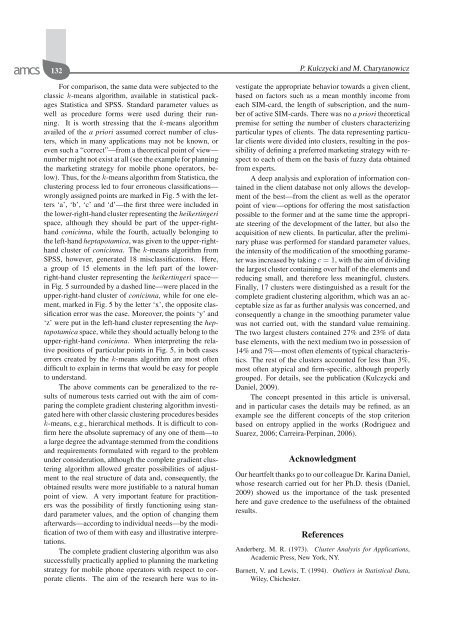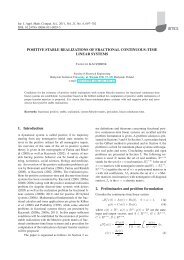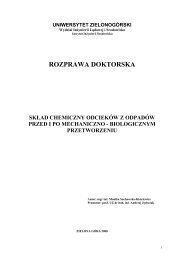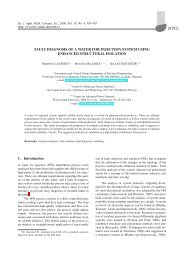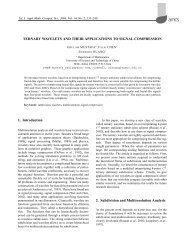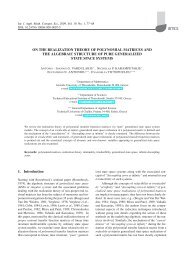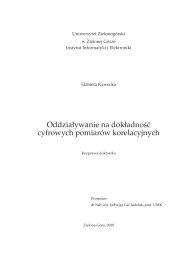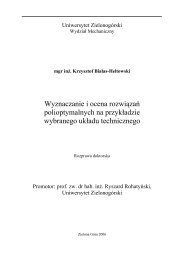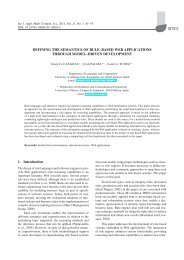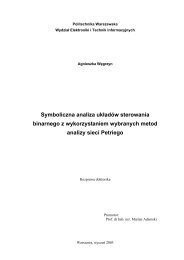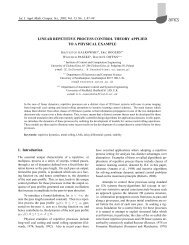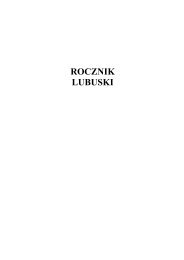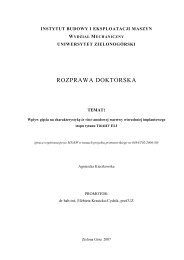A complete gradient clustering algorithm formed with kernel estimators
A complete gradient clustering algorithm formed with kernel estimators
A complete gradient clustering algorithm formed with kernel estimators
Create successful ePaper yourself
Turn your PDF publications into a flip-book with our unique Google optimized e-Paper software.
132 P. Kulczycki and M. Charytanowicz<br />
For comparison, the same data were subjected to the<br />
classic k-means <strong>algorithm</strong>, available in statistical packages<br />
Statistica and SPSS. Standard parameter values as<br />
well as procedure forms were used during their running.<br />
It is worth stressing that the k-means <strong>algorithm</strong><br />
availed of the aprioriassumed correct number of clusters,<br />
which in many applications may not be known, or<br />
even such a “correct”—from a theoretical point of view—<br />
number might not exist at all (see the example for planning<br />
the marketing strategy for mobile phone operators, below).<br />
Thus, for the k-means <strong>algorithm</strong> from Statistica, the<br />
<strong>clustering</strong> process led to four erroneous classifications—<br />
wrongly assigned points are marked in Fig. 5 <strong>with</strong> the letters<br />
‘a’, ‘b’, ‘c’ and ‘d’—the first three were included in<br />
the lower-right-hand cluster representing the heikertingeri<br />
space, although they should be part of the upper-righthand<br />
conicinna, while the fourth, actually belonging to<br />
the left-hand heptapotamica, was given to the upper-righthand<br />
cluster of conicinna. The k-means <strong>algorithm</strong> from<br />
SPSS, however, generated 18 misclassifications. Here,<br />
a group of 15 elements in the left part of the lowerright-hand<br />
cluster representing the heikertingeri space—<br />
in Fig. 5 surrounded by a dashed line—were placed in the<br />
upper-right-hand cluster of conicinna, while for one element,<br />
marked in Fig. 5 by the letter ‘x’, the opposite classification<br />
error was the case. Moreover, the points ‘y’ and<br />
‘z’ were put in the left-hand cluster representing the heptapotamica<br />
space, while they should actually belong to the<br />
upper-right-hand conicinna. When interpreting the relative<br />
positions of particular points in Fig. 5, in both cases<br />
errors created by the k-means <strong>algorithm</strong> are most often<br />
difficult to explain in terms that would be easy for people<br />
to understand.<br />
The above comments can be generalized to the results<br />
of numerous tests carried out <strong>with</strong> the aim of comparing<br />
the <strong>complete</strong> <strong>gradient</strong> <strong>clustering</strong> <strong>algorithm</strong> investigated<br />
here <strong>with</strong> other classic <strong>clustering</strong> procedures besides<br />
k-means, e.g., hierarchical methods. It is difficult to confirm<br />
here the absolute supremacy of any one of them—to<br />
a large degree the advantage stemmed from the conditions<br />
and requirements formulated <strong>with</strong> regard to the problem<br />
under consideration, although the <strong>complete</strong> <strong>gradient</strong> <strong>clustering</strong><br />
<strong>algorithm</strong> allowed greater possibilities of adjustment<br />
to the real structure of data and, consequently, the<br />
obtained results were more justifiable to a natural human<br />
point of view. A very important feature for practitioners<br />
was the possibility of firstly functioning using standard<br />
parameter values, and the option of changing them<br />
afterwards—according to individual needs—by the modification<br />
of two of them <strong>with</strong> easy and illustrative interpretations.<br />
The <strong>complete</strong> <strong>gradient</strong> <strong>clustering</strong> <strong>algorithm</strong> was also<br />
successfully practically applied to planning the marketing<br />
strategy for mobile phone operators <strong>with</strong> respect to corporate<br />
clients. The aim of the research here was to investigate<br />
the appropriate behavior towards a given client,<br />
based on factors such as a mean monthly income from<br />
each SIM-card, the length of subscription, and the number<br />
of active SIM-cards. There was no aprioritheoretical<br />
premise for setting the number of clusters characterizing<br />
particular types of clients. The data representing particular<br />
clients were divided into clusters, resulting in the possibility<br />
of defining a preferred marketing strategy <strong>with</strong> respect<br />
to each of them on the basis of fuzzy data obtained<br />
from experts.<br />
A deep analysis and exploration of information contained<br />
in the client database not only allows the development<br />
of the best—from the client as well as the operator<br />
point of view—options for offering the most satisfaction<br />
possible to the former and at the same time the appropriate<br />
steering of the development of the latter, but also the<br />
acquisition of new clients. In particular, after the preliminary<br />
phase was per<strong>formed</strong> for standard parameter values,<br />
the intensity of the modification of the smoothing parameter<br />
was increased by taking c =1, <strong>with</strong> the aim of dividing<br />
the largest cluster containing over half of the elements and<br />
reducing small, and therefore less meaningful, clusters.<br />
Finally, 17 clusters were distinguished as a result for the<br />
<strong>complete</strong> <strong>gradient</strong> <strong>clustering</strong> <strong>algorithm</strong>, which was an acceptable<br />
size as far as further analysis was concerned, and<br />
consequently a change in the smoothing parameter value<br />
was not carried out, <strong>with</strong> the standard value remaining.<br />
The two largest clusters contained 27% and 23% of data<br />
base elements, <strong>with</strong> the next medium two in possession of<br />
14% and 7%—most often elements of typical characteristics.<br />
The rest of the clusters accounted for less than 3%,<br />
most often atypical and firm-specific, although properly<br />
grouped. For details, see the publication (Kulczycki and<br />
Daniel, 2009).<br />
The concept presented in this article is universal,<br />
and in particular cases the details may be refined, as an<br />
example see the different concepts of the stop criterion<br />
based on entropy applied in the works (Rodriguez and<br />
Suarez, 2006; Carreira-Perpinan, 2006).<br />
Acknowledgment<br />
Our heartfelt thanks go to our colleague Dr. Karina Daniel,<br />
whose research carried out for her Ph.D. thesis (Daniel,<br />
2009) showed us the importance of the task presented<br />
here and gave credence to the usefulness of the obtained<br />
results.<br />
References<br />
Anderberg, M. R. (1973). Cluster Analysis for Applications,<br />
Academic Press, New York, NY.<br />
Barnett, V. and Lewis, T. (1994). Outliers in Statistical Data,<br />
Wiley, Chichester.


